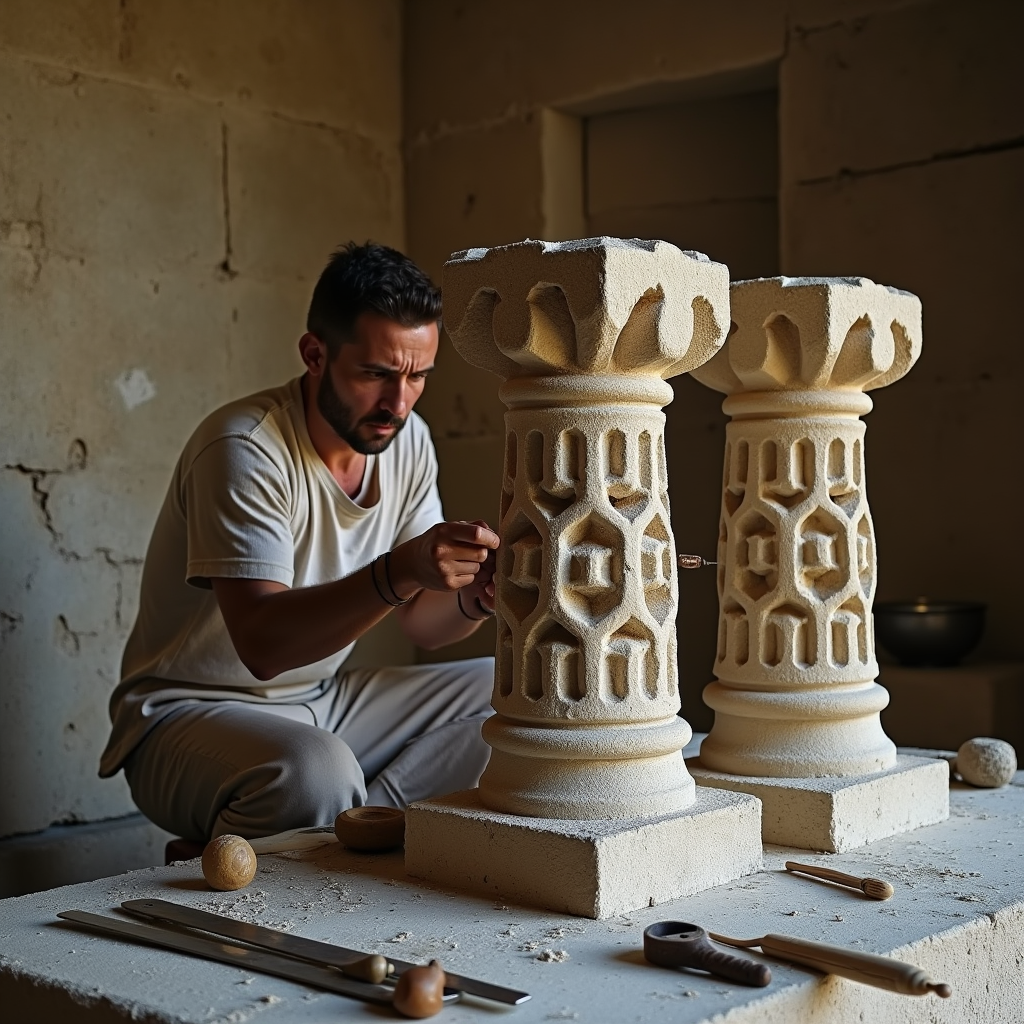The Enigmatic Pillar Head: An Unearthed Relic Raises Questions
An ancient limestone pillar head adorned with an enigmatic design has recently been unearthed near Jerusalem, captivating archaeologists and sparking intriguing theories about its origins and symbolism.
The Enigmatic Pillar Head: An Unearthed Relic Raises Questions
In 2020, excavations on the outskirts of Jerusalem uncovered a remarkable find – a limestone pillar head lying upside down amidst the ruins of a Byzantine structure from the 6th or 7th century C.E. This ancient artifact, believed to have been repurposed as construction material, has captured the attention of archaeologists and historians alike, raising intriguing questions about its origins and the symbolism it bears.
Decoding the Menorah-Like Design: Clues from the Past
The pillar head’s upper section features an eight-branched ‘candelabrum’ design on each side, while the lower section depicts eight leaves on each side. This unique and unprecedented design, resembling a symmetrical eight-branched lamp, has no known archaeological parallels, according to the Israel Antiquities Authority (IAA). Researchers believe the pillar head originally stood atop a column in a magnificent building or street in a late Roman period settlement (2nd-4th century C.E.) populated by descendants of Roman army retirees. However, the presence of a menorah-like symbol, a distinct Jewish symbol, in a Roman settlement raises questions about its purpose and context.
Echoes of Rebellion: The Bar Kokhba Revolt Connection?
Dr. Yuval Baruch, Deputy Director of Archaeology at the IAA, has put forth a compelling theory – the pillar head may have originated from a destroyed Jewish settlement, possibly linked to the Bar Kokhba revolt of Judean Jews against Roman forces in the 2nd century C.E. If this theory holds true, the pillar head could have been brought to the Roman settlement and repurposed as building material after the Jewish settlement’s destruction, echoing the echoes of rebellion and conflict that once reverberated through the region.
Craftsmanship and Symbolism: Unraveling the Mysteries
Dr. Orit Peleg-Barkat, an expert in ancient architectural decoration, offers an alternative perspective. She suggests that the craftsman may have intended to carve a conventional flower design but created something resembling a symmetrical eight-branched lamp due to limited familiarity with standard models. This theory raises questions about the level of craftsmanship and the potential symbolism behind the design, adding another layer of intrigue to this captivating archaeological find.
A Captivating Find: Celebrating Ancient Wonders
Despite the remaining questions about its original purpose and context, the discovery of this rare and unparalleled architectural artifact has intrigued archaeologists and historians alike. They are celebrating its significance as a testament to the rich cultural heritage and history of the region, while continuing to unravel the mysteries surrounding this enigmatic pillar head. As research progresses, this unearthed relic may shed new light on the intricate tapestry of civilizations that once thrived in the area, offering a captivating glimpse into the past.
